Search results for: Segmentation, Targeting

BYD segmentation, targeting and positioning helps the electric automaker identify and reach their target audience effectively. These three components work together to develop a clear marketing strategy. BYD focuses on the following segmentation bases: 1. Geographic Segmentation. Urban vs. Rural. BYD prioritizes urban areas with higher EV adoption rates and developed charging infrastructure. They offer smaller, affordable EVs for city commutes. Developed vs. Developing Countries. In developed countries, BYD competes with premium brands, focusing on advanced features and technology. In developing markets, they offer budget-friendly models with longer range for rural driving. Accordingly, the electric automaker uses multi-segment market positioning. Specific Regions. BYD targets regions with government incentives for EVs and tailors offerings based on local preferences and driving habits. 2. Demographic Segmentation. Age. Millennials and Gen Z are significant targets due to their environmental consciousness and tech-savviness. BYD offers sleek designs and connected features for these segments. Income Level. BYD offers a range of price points across categories, targeting both budget-conscious buyers and those willing to pay more for premium features. Family Size. Larger families with specific needs are catered to with spacious SUVs and MPVs designed for comfort and safety. 3. Psychographic Segmentation. Environmental Consciousness. BYD emphasizes its sustainability features and commitment to green technology, appealing to environmentally conscious consumers. Technology Adoption. Early adopters and tech enthusiasts are targeted with cutting-edge features and futuristic designs. Lifestyle Preferences. Active lifestyles are addressed with rugged EVs for outdoor adventures, while urban professionals are offered stylish and efficient city cars. 4. Behavioural Segmentation. Driving Habits. Daily commuters receive tailored offerings like fast charging options, while long-distance travellers are targeted with extended range models. Brand Loyalty. Existing customers are offered loyalty programs and upgrade options, while new audiences are targeted with attractive incentives and test drives. Price Sensitivity. Budget-conscious buyers are targeted with affordable models, while those willing to…

Marriott segmentation, targeting and positioning involves a series of marketing decision making for the largest hotel chain in the world. Segmentation involves dividing a market into smaller groups of customers with similar needs, wants, and behaviours. Generally, companies can engage in segmentation using a wide range of variables, such as demography, geography, psychographics, and behaviour. Marriott International uses the following segmentation bases: Segmentation Variable Description Demographics Age, income, education level, occupation, family size, and household income. Geography Region, country, city, and type of location (e.g., urban, suburban, rural). Psychographics Interests, values, lifestyle, and travel habits. Behavior Travel frequency, type of accommodations booked, and loyalty program membership. Segmentation bases for Marriott International Targeting is the process of selecting one or more of the identified segments to focus marketing efforts on. Businesses generally target segments that are most likely to be interested in their products or services, and that are most profitable to serve. Marriott targets business, leisure and luxury customer segments. Positioning is associated with creating a unique identity for a product or service in the minds of target customers. Effective positioning involves defining the product or service’s key features and benefits, and communicating them to customers in a way that differentiates the product or service from competitors. Customer Segment Marriott Amenities and Services Economy travellers Basic amenities and services Business travellers High-speed internet, business centres, meeting rooms, concierge services, executive lounges, complimentary breakfast Leisure travellers Swimming pools, kids’ clubs, family-friendly activities, restaurants, bars, fitness centers, spas Luxury travellers High-end accommodations, personalized service, gourmet dining, luxury amenities, exclusive experiences Customer segments and Positioning of Marriott Amenities and Services Marriott International Inc. Report contains the above analysis of Marriott segmentation, targeting and positioning and Marriott marketing strategy in general. The report illustrates the application of the major analytical strategic…

Netflix segmentation, targeting and positioning efforts are the basis of marketing strategy. Segmentation implies dividing the market into different groups on the basis of common traits and characteristics. The entertainment services provider segments its market on the basis of location, demography, behaviour, psychographic and other variables. Netflix uses the following positioning techniques: 1. Anticipatory positioning. When Netflix pioneered on-demand streaming of films, series and documentaries for a fixed monthly cost in 2007, the demand for such a service initially was low to non-existent. However, then CEO Reed Hastings and his team anticipated the demand for such a service and went ahead with the idea to see the demand gradually growing in the following years. 2. Mono-segment positioning. The largest streaming service in the world targets a single customer segment that is outward-looking, affluent consumers with international credit cards and smartphones. The following table 2 illustrates Netflix segmentation, targeting and positioning: Type of segmentation Segmentation criteria Netflix target customer segment Geographic Region Available virtually everywhere except in China and Russia Density Urban/rural Demographic Age Shows available for all age groups Gender Males & Females Life-cycle stage Bachelor Stage young, single people not living at home Newly Married Couples young, no children Full Nest I youngest child under six Full Nest II youngest child six or over Full Nest III older married couples with dependent children Empty Nest I older married couples, no children living with them Empty Nest II older married couples, retired, no children living at home Solitary Survivor I in labour force Solitary Survivor II retired Occupation Students, employees, professionals, senior manager, executives Behavioral Degree of loyalty ‘Hard core loyals’ and ‘Switchers’ Benefits sought Recreation & Inspiration Personality Easygoing, determined, ambitious User status non-users, potential users, first-time users, regular users, or ex-users of the streaming service Psychographic Social class Working class, middle class and upper…
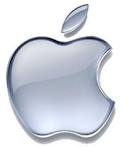
Apple segmentation, targeting and positioning represents the core of its marketing efforts. Segmentation, targeting and positioning is needed because no company or product can be all things to all people. Apple segmentation targeting and positioning initiatives include the following stages: 1. Segmenting the market. Segmentation involves dividing population into groups according to certain characteristics. Specifically, customers can be segmented on the basis of their place of living, demographic variables, behavioural traits, psychographic characteristics and other variables. Market segments need to be measurable, accessible, sustainable and actionable in order to be used for marketing purposes. 2. Targeting selected segment(s). This stage involves identifying segments that are most attractive for the business. In other words, targeting implies choosing specific groups identified as a result of segmentation to sell products to. The multinational technology company positions itself as a premium brand offering products and services with advanced functions and capabilities for additional costs. Accordingly, Apple target customer segment comprise well-off individuals who are willing to pay extra for technology products and services with advanced design, functions and capabilities. A common set of characteristics shared by Apple target customer segment include appreciating design, quality and performance of technology products and services over their prices. 3. Positioning the offering. Positioning refers to the selection of the marketing mix that is the most suitable for the target customer segment. It is the final process, where companies attempt to associate their products and services with needs and wants of selected customer segment. Apple targets its customer segment by tailoring products, services and overall business approach to appeal to the members of segment to a maximum extent. Under the leadership of late Steve Jobs, Apple mainly used mono-segment type of positioning, appealing to the needs and wants of a single customer segment. However, after Tim Cook became CEO,…

Nvidia segmentation, targeting, and positioning (STP) is a strategic approach to marketing that involves dividing the market into smaller groups of consumers (segmentation), selecting one or more of these groups to target with a specific marketing mix (targeting), and then positioning the product or service in the minds of consumers in a way that differentiates it from the competition (positioning). Nvidia uses the following types of product positioning. – Anticipatory positioning. Anticipatory product positioning is a strategy in which a company positions its products or services in a way that anticipates future trends or needs in the market. Nvidia has used this strategy effectively by positioning its products in a way that anticipates the increasing demand for high-performance computing solutions and emerging technologies such as artificial intelligence and autonomous vehicles. For example, Nvidia recognized in early 1990s the potential of AI and positioned its products accordingly, investing heavily in research and development to create GPUs that are specifically designed to accelerate AI workloads. As a result, Nvidia has become a key player in the AI market, with its GPUs powering many of the most advanced AI applications in industries such as healthcare, finance, and automotive. – Quality product positioning. Quality product positioning is a strategy in which a company positions its products or services as high-quality, reliable, and superior to those of its competitors. Nvidia has used this strategy effectively by emphasizing the quality and reliability of its products and by investing in research and development to continually improve its offerings. Accordingly the company creates high-performance GPUs for a wide range of applications, from gaming to data centre workloads. The following table illustrates Nvidia segmentation, targeting and positioning: Type of segmentation Segmentation criteria Nvidia target customer segment Geographic Region Taiwan, China, United States, other countries Density Urban…

WeWork segmentation, targeting and positioning is an important tool for the global flexible workspace provider to develop right products and services for right customers. Segmentation involves dividing customers into different groups according to their common needs and common characteristics. Targeting implies selecting specific groups among the population to sell products and services to. Positioning refers to developing elements of the marketing mix that best resonates with the needs and wants of the target customer segment. WeWork uses the following types of positioning: 1. Functional positioning. Functional positioning refers to positioning of products and services that are aimed at solving specific problems customers are facing. Businesses needed flexible workspace solutions without commitment of lengthy and expensive lease. Adam Neumann and Miguel McKelvey saw commercial opportunity in this problem and established WeWork with functional positioning in 2010. 2. Multi-segment positioning. The co-working giant offers services to more than one customer segment in terms of their workspace needs. For example, ‘Space as a service’ category is developed for small and medium sized businesses and enterprise companies. ‘WeWork Access’ category, on the other hand, aims to attract different customer segment, namely sole entrepreneurs at the early stages of their journey in business. The following table illustrates WeWork segmentation, targeting and positioning: Type of segmentation Segmentation criteria WeWork target customer segment Geographic Region 38 countries worldwide Density Mainly urban areas Demographic Age 18-65 Gender Males & Females Life-cycle stage Bachelor Stage: young, single people not living at home Newly Married Couples: young, no children Full Nest I: youngest child under six Full Nest II: youngest child six or over Full Nest III: older married couples with dependent children Empty Nest I: older married couples, no children living with them Occupation Self-employed, professionals, senior manager, executives, business owners Behavioral Degree of loyalty ‘Hard core loyals’ ‘Soft core loyals’ ‘Switchers’ Benefits…
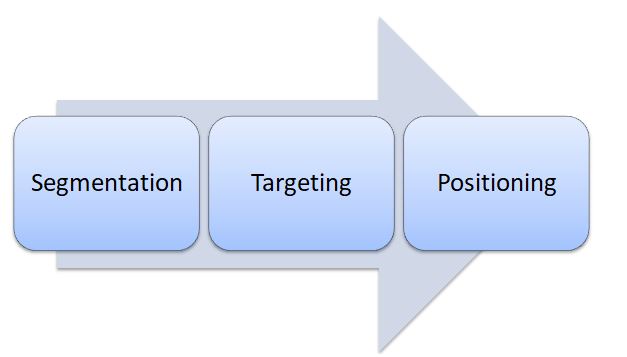
Segmentation, targeting and positioning (STP) is a marketing model that assists classifying population segments according to their needs and common characteristics, selecting specific segments and developing products and services for this particular segment. The basic premise behind STP is that you cannot sell everything to everyone. Therefore, you need to limit your product and service offerings and target limited population segment that have higher chance to purchase them. Today, Amazon is trying to be everything for everyone, but even Amazon started only as an online bookseller to gradually increase its offering to increasing numbers of customer segments. STP is effective because it allows personalisation of products and services to the needs and wants of selected consumers. STP approach shifts the focus from product to consumers and helps in satisfying customer needs and wants profitably. Application of Segmentation, Targeting and Positioning Segmentation targeting and positioning initiatives include the following stages: 1. Segmenting the market. Segmentation is dividing population on the basis of their common traits and characteristics. Segmentation helps identifying niches with specific previously untapped needs. There are many types and bases of segmentation. The table below the most popular types of segmentation. Type of segmentation Segmentation criteria Example Geographic Region North America, Asia, Europe Density Urban/rural Climate Hot, cold, wet, dry Demographic Age Teenagers, middle aged, elderly. Gender Males & Females Life-cycle stage Bachelor Stage young, single people not living at home Newly Married Couples young, no children Full Nest I youngest child under six Full Nest II youngest child six or over Full Nest III older married couples with dependent children Empty Nest I older married couples, no children living with them Empty Nest II older married couples, retired, no children living at home Solitary Survivor I in labour force Solitary Survivor II retired Occupation Students, employees, professionals, senior manager, executives Behavioral Degree of loyalty…
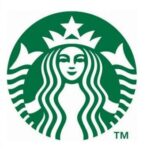
Starbucks segmentation, targeting and positioning comprise marketing decisions directed at identifying appropriate group of people among the general public as future customers for the business and targeting this segment via positioning products and services that resonates well with their needs and wants. In simple terms, segmentation, targeting and positioning refers to deciding whom to sell to, and positioning products and services accordingly. Starbucks Coffee uses the following types of positioning: – Mono segment positioning. The coffee chain giant targets premium customer segment only i.e. individuals who are willing to pay extra for the quality of products and services. – Adaptive positioning. Due to the tendency of increasing consumer health awareness, Starbucks Coffee developed coffee beverages with less calories such as Chai Tea Latte (103 calories) Caffe Misto (63 calories) and Iced Americano (11 calories). – Standby positioning. Certain Starbucks beverages such as Frappuchino had to await changes in the market for certain period of time to find demand. – Sustainability positioning. The world’s largest coffeehouse chain attempts to shift customer attention to sustainability aspect of its business. For example, by the end of FY21 there were 2779 Greener Store framework Starbucks branches[1]. This store format aims to achieve reductions in carbon emissions, water usage and landfill waste. The following table illustrates Starbucks segmentation, targeting and positioning: Type of segmentation Segmentation criteria Starbucks target customer segment Geographic Region US, Canada, Latin America, Europe, Middle East, Africa, China and Asia Pacific region Density Urban Demographic Age 18 – 60 Gender Males & Females Life-cycle stage Bachelor Stage young, single people not living at home Newly Married Couples young, no children Full Nest I youngest child under six Full Nest II youngest child six or over Full Nest III older married couples with dependent children Occupation Students, employees, professionals Behavioral Degree of loyalty ‘Hard core loyals’…
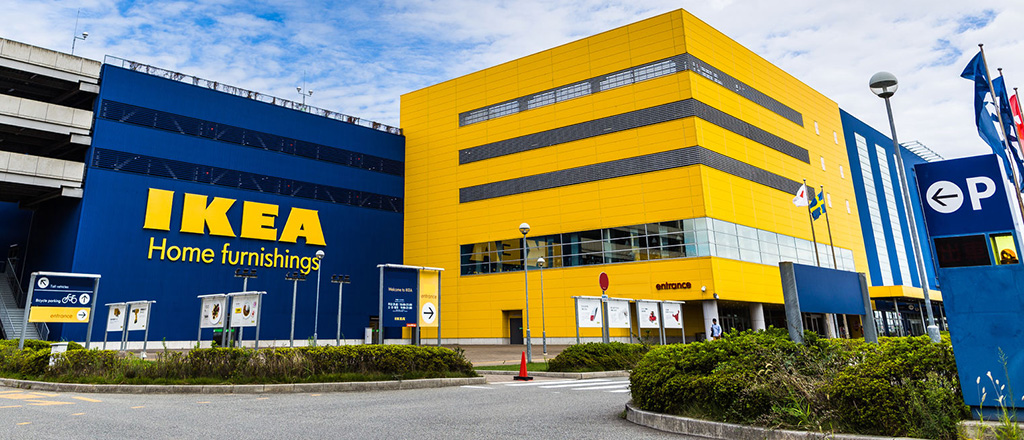
IKEA segmentation, targeting and positioning involves a set of consequent marketing decisions that constitute the core of company’s marketing strategy. Segmentation refers to dividing population into groups on the basis of their common traits and characteristics. Targeting involves choosing specific groups identified as a result of segmentation as consumers for the brand. Positioning implies the selection of the marketing mix the most attractive to the target customer segment. There are various types of positioning such as mono-segment, multi-segment, standby, anticipatory, imitative, adaptive, defensive and stop-gap types of positioning. IKEA uses the following types of product positioning: – Mono-segment positioning. This type of positioning is associated with making an appeal to the needs and wants of a single customer segment. IKEA uses mono-segment positioning via focusing on a single customer segment that are cost-conscious and prefers to get value for money. – Adaptive positioning. This positioning method is based on periodically repositioning products and services to reflect changes in customer preferences. The Swedish furniture chain takes into account dynamic nature of customer preferences in designing its products. For example, increasing popularity of minimalism in the global scale has been reflected in the latest ranges of IKEA products. – Aesthetic positioning. The world’s largest furniture retailer uses ‘democratic design’ concept to develop its products. Democratic design appeals to the needs and preferences of a specific customer segment that value balance between function, form, quality, sustainability and low price. The following Table illustrates IKEA segmentation, targeting and positioning: Type of segmentation Segmentation criteria IKEA target customer segment Geographic Region Europe, Americas, Asia & Australia, Russia. In total 11 franchisees operate in more than 500 locations Density Urban Demographic Age 18 and older Gender Males & Females Life-cycle stage Bachelor Stage young, single people not living at home Newly Married Couples young, no…
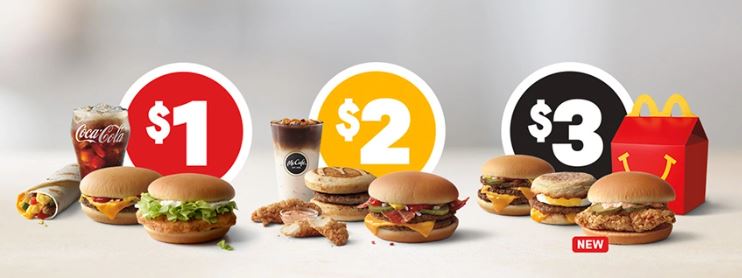
McDonald’s segmentation, targeting and positioning is one of the integral components of its marketing strategy. Segmentation involves dividing population into groups according to certain characteristics, whereas targeting implies choosing specific groups identified as a result of segmentation to sell products. Positioning refers to the selection of the marketing mix the most suitable for the target customer segment. McDonald’s uses the following types of segmentation: 1. Multi-segment positioning. The fast food chain exploits multiple segments in terms of geography and demographics at the same time. The fast food giant develops items that appeals to the needs and preferences of each segment. 2. Adaptive positioning. McDonald’s periodically repositions its products according to changes in customer tastes and preferences. For instance, reflecting increasing health concerns by customers the fast food chain introduced a number of healthy items in its menu such as Fruit & Maple Outmeal and Southwest Grilled Chicken Salad. The following table illustrates McDonald’s segmentation, targeting and positioning: Type of segmentation Segmentation criteria McDonald’s target segment Geographic Region Operating in 119 countries Density Urban/rural Demographic Age 6 – 70 Gender Males & Females Life-cycle stage Bachelor Stage: young, single people not living at home Newly Married Couples: young, no children Full Nest II: youngest child six or over Income Low and middle Occupation Students, employees, professionals Behavioral Degree of loyalty ‘Hard core loyals’ and ‘Switchers’ Benefits sought Cost benefits, time efficiency Personality Easygoing& careless User status Potential and regular fast foodeaters Psychographic Social class Lower, working and middle classes Lifestyle McDonald’s targets Resigned, Struggler and Mainstreamer individuals according to Cross Cultural Consumer Characterization developed by Young & Rubican McDonald’s segmentation, targeting and positioning Important aspects of the target customer segment as illustrated in table above serve as the main guiding principle for McDonald’s marketing management to deal with Product, Place, Price,…
